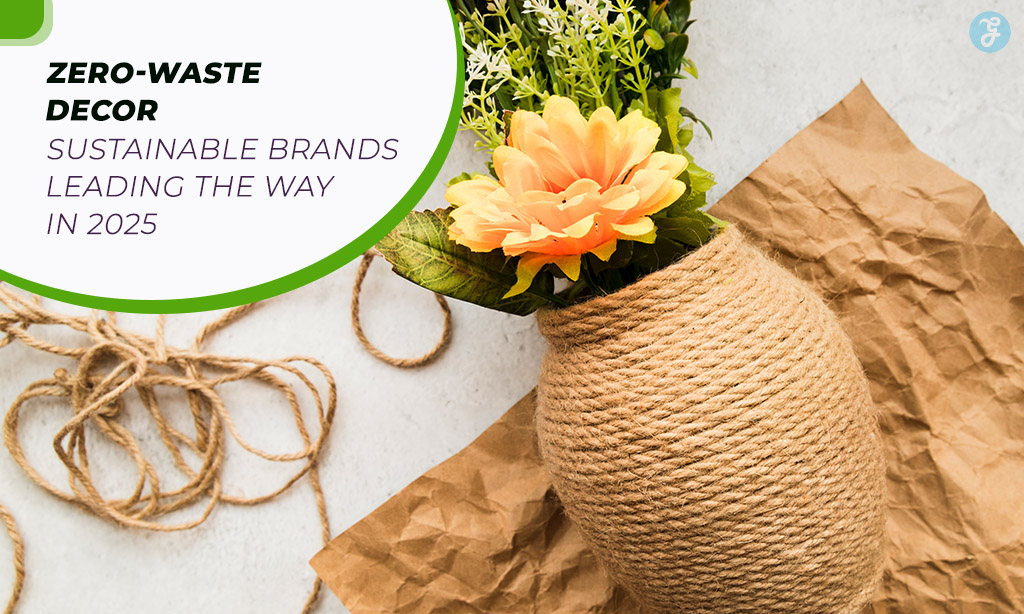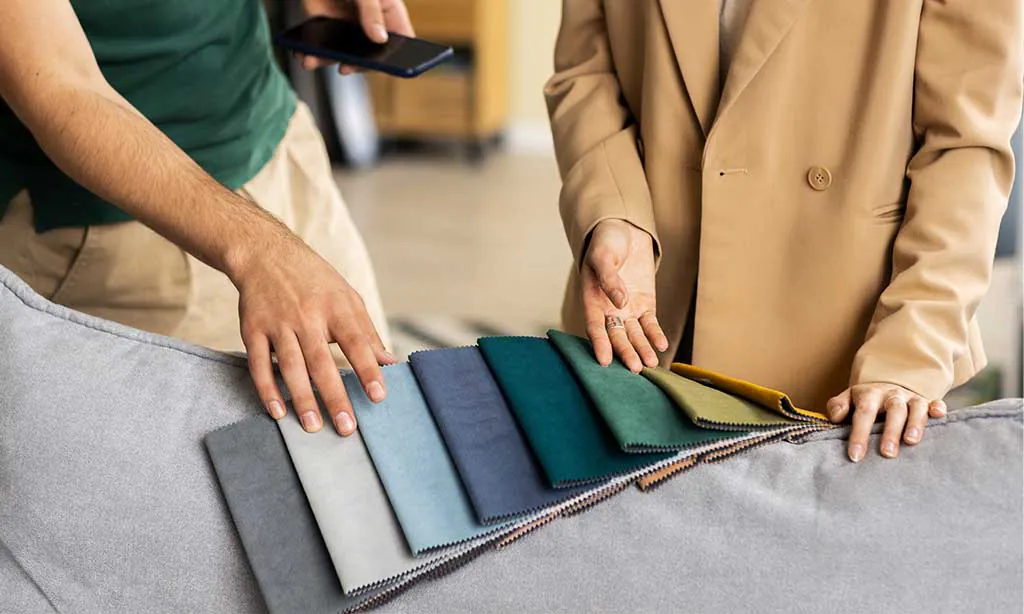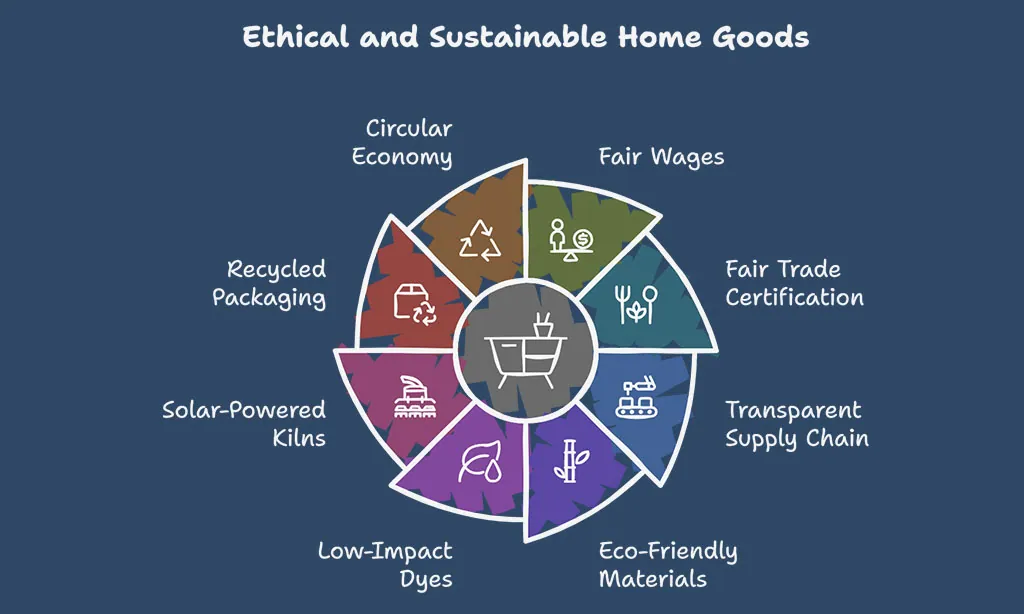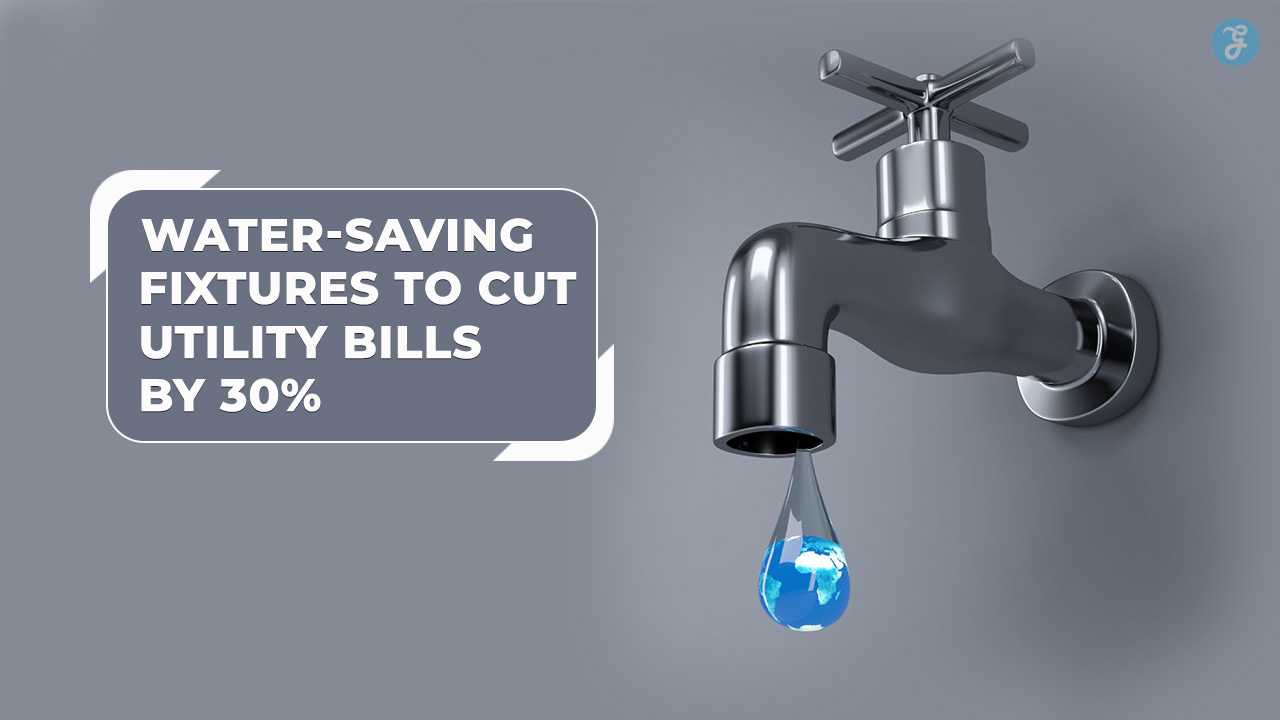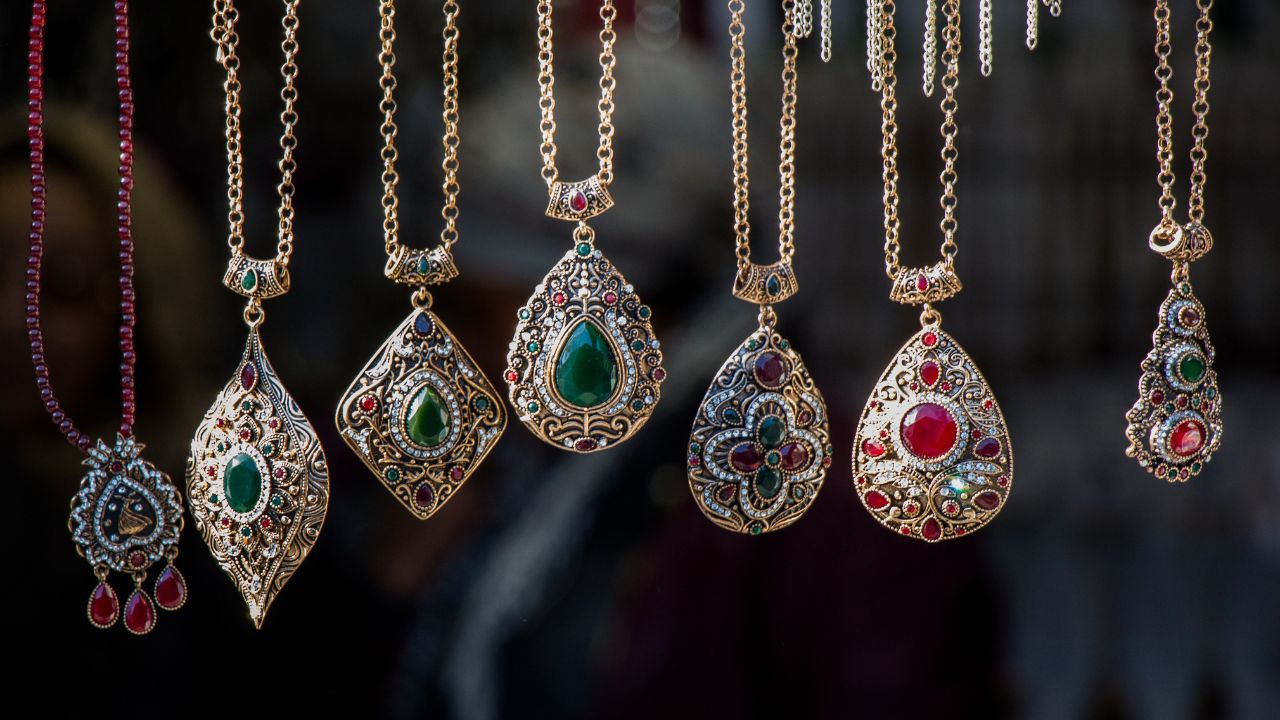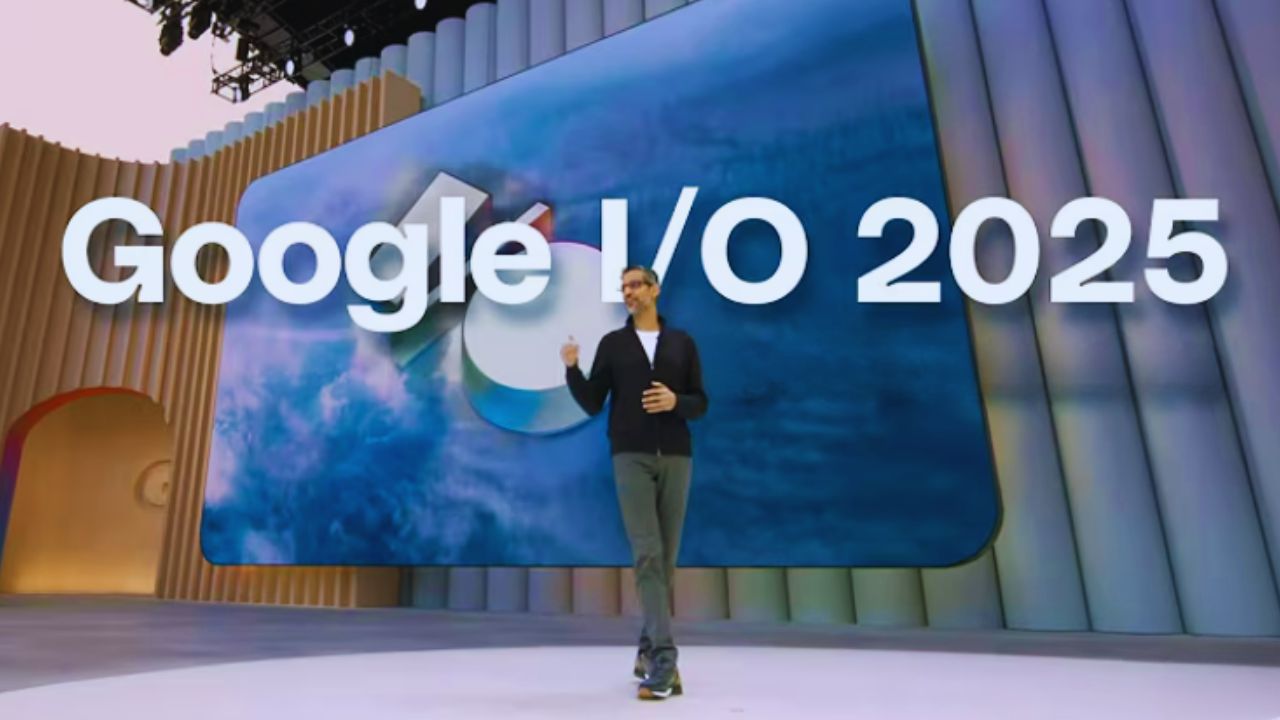You want a fresh space. But tossing old decor feels wasteful. The average U.S. home tosses over 20 pounds of decor each year.
We list 8 sustainable brands leading the way in 2025. They use recycled materials, organic cotton, and eco-friendly supplies. They upcycle common items, curb your carbon footprint, and boost the circular economy.
You will learn tips for a zero-waste home and find stylish decor picks. Read on.
Key Takeaways
- U.S. homes toss over 20 pounds of decor every year. Eight brands in 2025 cut this waste with recycled, organic, and upcycled materials.
- Patagonia uses recycled fibers and organic cotton, holds B Corp and fair-trade certifications, donates 5% of profits to conservation, and joined the Zero Emission Maritime Buyers Alliance in 2025 to slash shipping emissions.
- Eileen Fisher frees scraps with zero-waste pattern making, tracks saved fabric by the pound, reclaims old garments via a take-back program, and dyes textiles with low-water, clean-energy methods.
- West Elm builds furniture from FSC-certified wood and recycled metal, powers five warehouses by solar panels, offers store credit to swap chipped chairs, and ships in recycled packaging.
- Avocado, Parachute, Made Trade, and VivaTerra use organic or vegan fibers, plant a tree per purchase, run on renewable energy, pay fair wages, reuse scraps in new designs, and pack goods in compostable or recycled materials.
Patagonia: Pioneering Sustainable Home Textiles
Patagonia leads home textiles with recycled materials and organic cotton, giving old fibers new life. It holds B Corp certification and meets fair trade certification standards. Factories use sustainable manufacturing and strict fair labor practices that deliver fair wages.
Its circular economy model cuts waste, it threads each cushion with purpose.
The brand donates five percent of profits to conservation and climate action programs. It teamed with the Zero Emission Maritime Buyers Alliance in 2025 to slash shipping emissions and shrink carbon footprint.
Patagonia packs products with Pack4Good, a tool for sustainable packaging and carbon reduction, it even pilots renewable energy in its storage hubs. Customers see green progress when their throws arrive with net zero goals woven into every thread.
Eileen Fisher: Zero-Waste Upholstery and Fabrics
Soft sofas made with durable, organic cotton and linen fabric last for years, cutting waste at home. Eileen Fisher plants sustainability in every thread. Designers shape upholstery yard by yard, with zero-waste pattern making that trims scraps.
Each cut piece joins the first nationwide recycled textile system, a tool that tracks saved pounds of fabric. People drop off old garments in a handy take-back program. That worn tunic transforms into a plush cushion cover.
A small stitch holds a big idea: recycled, sustainable materials can look fresh, feel soft, and shrink your carbon footprint.
Team members see every scrap as a chance for value. They steer each bolt through a Life Cycle Assessment tool to track energy use and carbon impact. They dye fabrics with low-water, clean energy processes and skip toxic chemicals.
They follow cradle to cradle principles to build a circular design loop. Minimal seams, sturdy weave, organic fibers and tight stitching all add durability. That extra strength keeps couches from sagging and cuts fast fashion cycles in our living rooms.
Homes feel cozy, wallets feel happy, the planet smiles back.
West Elm: Eco-Friendly Furniture and Decor
West Elm uses FSC certified wood, recycled metals, organic cotton, and other eco-friendly materials. Staff track carbon footprint per sofa with an emissions tracker, keeping numbers low.
Local teams meet B corp certification and fair trade certification rules, keeping labor fair. Craftspeople mend vintage garments, stitching old linen into plush pillows. Designers follow sustainable sourcing and sustainable manufacturing, in a transparent supply chain.
Design teams live circular economy ideas. They turn scrap wood and fabric scraps into new decor, like coffee tables and rugs. Stores let you swap chipped chairs for credits, it feels like a treasure hunt.
Solar panels power five warehouses, cutting energy use and carbon footprint. Every shipment lands in recycled packaging, adding one more zero waste step.
Avocado: Organic and Upcycled Home Essentials
Shoppers love organic fabrics for home. Avocado crafts covers and bedding from organic cotton. It uses low-impact dyes to cut its carbon footprint. Like a phoenix, old textiles rise into plush covers.
The brand adds recycled materials to cushions and throws. It holds B Corp certification and fair-trade labels. Each time someone buys a T-shirt, the brand plants a tree to spur reforestation and feed the circular economy.
Parachute: Sustainable Bedding and Bath Accessories
Parachute crafts bedding and bath sets with cruelty-free vegan fibers. They skip leather or fur in every towel, sheet, and duvet. Seaweed yarns blend with organic cotton for a soft, eco-friendly touch.
One fan wrote that this set feels like a cloud hug. Ninety-five percent of the 2024 line draws on sustainable materials. The brand sources recycled materials and plant-based fibers across its network.
That move cuts waste and boosts a circular economy.
Parachute earned B Corp certification after shifting to fair labor practices. Employees collect fair wages and follow strict trade certification. Quality labs run lifecycle assessments on every fiber.
Solar power and other renewable energy sources fuel their factory. This cuts their carbon footprint and saves water. Customers unwrap boxes wrapped in sustainable packaging, free of excess plastic.
Fans cheer its transparent supply chain and eco-friendly spirit.
Made Trade: Ethical and Artisanal Home Goods
Made Trade works with skilled craftspeople across Asia, Africa, and Latin America, paying fair wages and holding fair trade certification for each piece. It keeps a transparent supply chain, so you see every step from yarn to finished bowl.
They source woven baskets, hand-pressed ceramic mugs, sturdy jute rugs, and organic cotton throws that tell a story with every thread.
They use eco-friendly materials such as bamboo, hemp, and recycled metal. The team cuts carbon footprint by using low-impact dyes and solar-powered kilns. The brand joins the pack4good campaign for recycled packaging.
It follows a circular economy and reuses scraps in new designs. Your home gets a dash of soul, and you back sustainable business that values fair wages.
VivaTerra: Nature-Inspired, Zero-Waste Decor
VivaTerra weaves nature into every planter, vase, and candle holder, using recycled glass and hand-spun clay. The brand packs each item in compostable kraft boxes, cutting down on plastic waste and shipping scrap.
Artisans spin organic cotton cushions on a circular loom, then dye them in low-impact baths, so no toxic runoff hits rivers. This zero-waste approach fits right into a circular economy mindset, where old scraps loop back into new treasures.
Small-scale farmers in Egypt supply long-staple Egyptian cotton for VivaTerra’s soft throws and table linens. The company pays fair wages, so growers reinvest in their fields, not big banks.
VivaTerra labels each piece with a seed symbol, nodding to the idea that every purchase plants hope and supports sustainable manufacturing. Quietly, one cushion at a time, the brand chips away at fast fashion’s waste mountain.
Coyuchi: Organic Linens with a Circular Approach
Coyuchi uses farmed organic cotton. They log each bale’s carbon footprint in their life cycle analysis tool. Designers craft sheets and towels in fair trade workshops led by Peruvian artisans.
Packaging comes from recycled materials. They cut water consumption by 50 percent at their dye facility. Mills run on renewable energy. Teams use sustainable manufacturing methods.
Coyuchi loops old linens into new stock. This circular economy trick stops tons of fabric reaching landfills. The brand plants ten trees per item to spur reforestation. It holds B Corp and fair trade certification, and it taps a transparent supply chain.
Orders sail on zero emission maritime buyers alliance ships. Shoppers track each sheet’s water record on the brand site.
Takeaways
These eight names prove waste can stay out of style. Patagonia leads in recycled textiles, cutting carbon footprint. Eileen Fisher turns old fabrics into fresh, chic upholstery. West Elm builds long-lasting furniture with reclaimed wood.
That mattress maker blends organic cotton and upcycled scraps for decor. The bedding label powers its linen line with renewable energy. Made Trade and VivaTerra share fair labor and natural clay accents in each piece.
Choosing these picks moves us into a circular economy.
FAQs on Zero-Waste Decor Brands
1. What is zero-waste decor?
Zero-waste decor means no trash. It uses recycled materials, organic cotton, and eco-friendly materials. It cuts your carbon footprint, fits a circular economy. It’s like building a nest from old leaves, but prettier.
2. Which sustainable clothing brands lead zero-waste decor in 2025?
People Tree, Eileen Fisher, Stella McCartney, and Mud Jeans are top names. They show how to mix zero-waste decor and sustainable fashion. They use sustainable materials, organic materials, and sustainable manufacturing. They set fair wages, fair labor practices, and hold b corp certification.
3. How do these brands cut carbon footprint?
They use renewable energy, energy efficiency, and green shipping, via the zero emission maritime buyers alliance, and pack4good campaign. They aim for net-zero emissions, and use sustainable packaging to decarbonize their supply.
4. Can I buy workwear or smart casual items?
Yes, you can find workwear and smart casual items. You can buy shirts, jackets, jeans made to measure with organic cotton and eco-friendly materials. They use natural dyeing to avoid waste. One fan said a jacket felt like a hug from Earth.
5. Are these brands transparent in their supply chain?
Yes, they show a transparent supply chain, with fair trade certification, fair wages, fair labor practices. They join a carbon market to lower co2 emissions.


